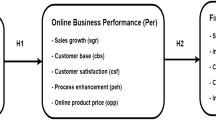Abstract
The euro cash changeover that took place in 2002 in 12 countries of the European Economic and Monetary Union was associated with abnormal price increases in most member countries. This paper investigates the influence of product market competition on the size of the changeover-related prices hikes, showing that the price hikes were less prevalent in countries with a higher level of competition. For the countries that are to join the euro area in coming years, this means that fostering competition can help contain changeover-related price increases. This aspect is of particular importance for the most recent and next wave of euro adopters, because of their rather heavy product market regulation as measured by the OECD, which are likely to restrain competition. The results indicate that comprehensive reform efforts can be more beneficial in containing changeover-related price hikes than a selective easing of product market regulation in a subset of areas.
Similar content being viewed by others
Notes
Although Aalto-Setälä and Raijas (2003) find evidence that consumers remembered prices in the old currencies when evaluating euro prices Cannon and Cipriani (2006) show that European consumers had difficulties in assessing the value of euro, which means that the assessment of new prices may have been distorted.
The output gap is defined as GAP t = (GDPt/GDPt* − 1)*100, where GDP is actual GDP in year t and GDP* is potential GDP in year t.
The choice of the control variables is motivated by Ehrmann (2006) who provides empirical evidence that the size of the changeover effect was affected by these factors. The economic intuition is the following: More complex conversion rates are supposed to be associated with higher information processing costs on the side of consumers, thus elevating the problem of rational inattention. Mandatory dual pricing has the opposite effect as consumers can simply rely on the prices in the old national currency for their purchasing decision.
The classification of conversion rates follows Ehrmann (2006) with the conversion rates of Germany, Italy and Portugal classified as simple, those of Belgium, Luxembourg and Greece classified as medium complex, and the conversion rates of the remaining countries classified as complex.
See Conway et al. (2005) for details about the indicators. All data are taken from the OECD’s PMR database. The final variable is the average of the values for 2001 and 2002, where these are obtained by linear interpolation. Mark-ups in non-manufacturing sectors are calculated based on data taken from the OECD STAN database. Using alternatively mark-ups in manufacturing sectors yields very similar results.
When estimating Eq. 2 for all sectors, sectoral dummies are included in the specification. This is not possible for the sub-sample regressions since there are sectors with only a single observation.
References
Aalto-Setälä V, Raijas A (2003) Consumer price knowledge before and after the euro changeover. Int J Consum Stud 27:210–217
Baumol W (1982) Contestable markets: an uprising in the theory of industry structure. AER 72:1–15
Cannon E, Cipriani GP (2006) Euro-illusion: a natural experiment. J Money Credit Bank 38:1391–1403
Conway P, Janod V, Nicoletti G (2005) Product market regulation in OECD Countries: 1998 to 2003. OECD Economics Department Working Paper No. 419
Dziuda W, Mastrobuoni G (2009) The euro changeover and its effects on price transparency and inflation. J Money Credit Bank 41:101–129
Ehrmann M (2006) Rational inattention, inflation developments and perceptions after the euro cash changeover. ECB Working Paper No. 588
Ercolani MG, Dutta J (2006) The euro-changeover and euro-inflation: evidence from EuroStat’s HICP. Department of Economics Discussion Paper No. 06-03, University of Birmingham
Eurostat (2003) Euro changeover effects, annex to news release dated 18 June 2003
Folkertsma CK, van Renselaar C, Stokman ACM (2002) Smooth euro changeover, higher prices? Results of a survey among Dutch retailers. Research memorandum No. 682, De Nederlandsche Bank
Gaiotti E, Lippi F (2005) Pricing behaviour and the introduction of the euro: evidence from a panel of restaurants. CEPR Discussion Paper No. 4893
Santos D, Evagelista R, Nascimento T, Coimbra C (2002) Analysis on the impact of the conversion of escudos into euros. Banco de Portugal Economic Bulletin, September, pp 101–114
Saxonhouse GR (1976) Estimated parameters as dependent variables. AER 66:178–183
Sims CA (2003) Implications of rational inattention. J Monet Econ 50:665–690
Sims CA (2006) Rational inattention: beyond the linear-quadratic case. Am Econ Rev 96:158–163
Acknowledgments
I would like to thank Andreas Wörgötter, Felix Hüfner and two anonymous referees for valuable comments and suggestions.
Author information
Authors and Affiliations
Corresponding author
Additional information
This paper builds on work which was prepared for an informal EDRC Seminar on 9 July 2008 and published as Working Paper No. 632 of the OECD Economics Department. All views expressed in this paper are those of the author and do not necessarily represent the views of the OECD or its member countries.
Rights and permissions
About this article
Cite this article
Koske, I. Price effects of the euro cash changeover: the role of product market competition. Empirica 38, 223–230 (2011). https://doi.org/10.1007/s10663-010-9133-4
Published:
Issue Date:
DOI: https://doi.org/10.1007/s10663-010-9133-4




